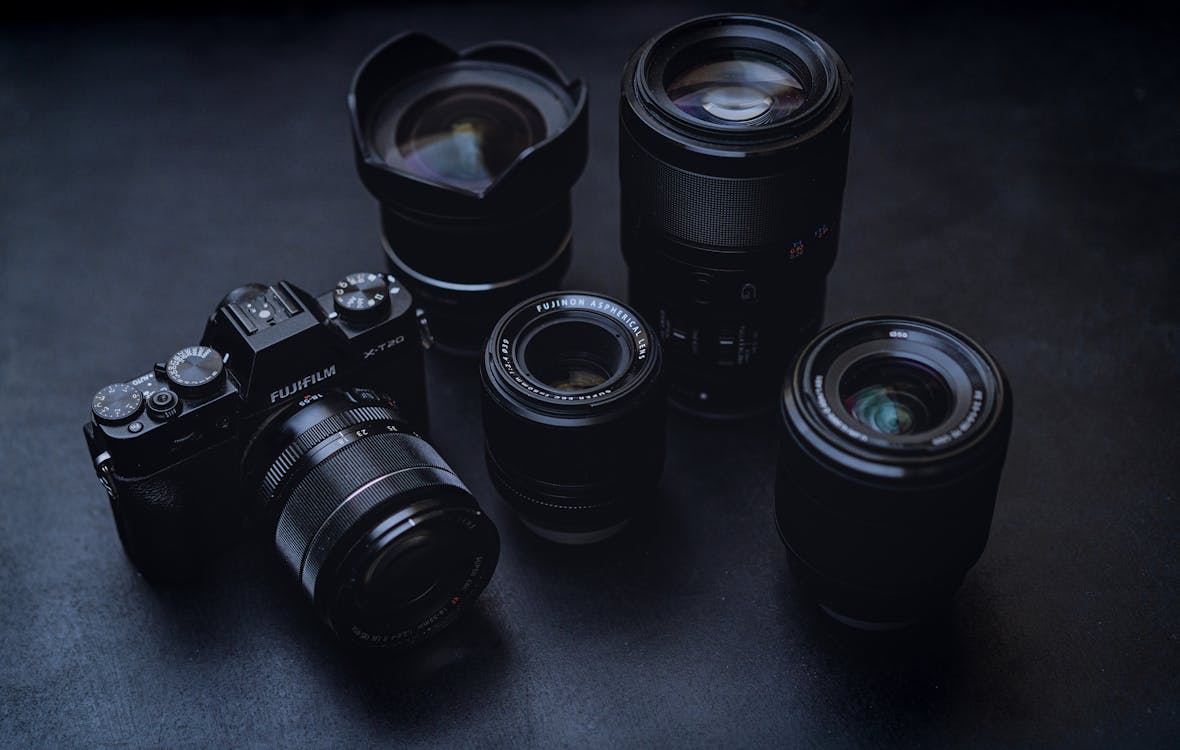Are you ready to take your photography to new heights? The right lens can make all the difference between a good photo and a breathtaking masterpiece. Let's dive into the world of DSLR lenses and discover how to build your dream collection!
Prime vs. Zoom: Which Lens Type Deserves Your Investment?
The prime versus zoom debate has photographers divided, and for good reason! Prime lenses feature a fixed focal length that cannot be adjusted, but what they lack in versatility they more than make up for in quality. These gems typically deliver sharper images, superior low-light performance with their wider apertures (hello, gorgeous bokeh!), and often come in more compact packages. They push you to physically move around your subject, encouraging creativity through different perspectives.
Zoom lenses, on the other hand, are the multitaskers of the photography world. With variable focal lengths, they let you instantly reframe your shot without changing your position—perfect for dynamic environments like weddings or sports events where moments happen in a flash. While traditionally they might sacrifice some image quality and low-light capability compared to primes, modern high-end zooms have narrowed this gap significantly. For photographers who value convenience or need to travel light, a versatile zoom might be your best photography companion.
Lens Recommendations for Every Scenario: Your Complete Guide
For Portrait Photography
Nothing beats the creamy background blur and flattering perspective of an 85mm f/1.4 prime lens for portrait work. This focal length provides the perfect distance between you and your subject, creating comfortable interaction while avoiding facial distortion.
1. Sigma 85mm f/1.4 Art delivers exceptional sharpness and dreamy bokeh that will make your portraits pop.
2. Canon 85mm f/1.8 offers tremendous value for those watching their budget. Looking for something even more dramatic? Try a 135mm f/2 for incredibly compressed backgrounds and spectacular subject isolation.
For Landscape Photography
Landscape photographers thrive with wide-angle lenses that capture sweeping vistas in all their glory.
3. Tamron 15-30mm f/2.8 offers incredible versatility with its zoom range while maintaining edge-to-edge sharpness that landscape work demands. If you're willing to invest more,
4. Nikon 14-24mm f/2.8 has achieved legendary status among professionals for its exceptional clarity and minimal distortion. Don't forget to consider a quality polarizing filter to enhance those blue skies and reduce reflections on water surfaces—it's a landscape photographer's secret weapon!
For Wildlife Photography
Wildlife photography demands reach, speed, and precision—making a telephoto lens essential equipment.
5. Sigma 150-600mm Contemporary offers remarkable range at a reasonable price point, perfect for capturing distant subjects without breaking the bank. If budget isn't a concern,
6. Canon 500mm f/4L IS II USM represents the gold standard with its lightning-fast autofocus and exceptional image stabilization, crucial for those handheld shots when you can't use a tripod. Remember that wildlife photography often means shooting in challenging light conditions, so image stabilization technology should be high on your priority list.
For Macro Photography
Enter the fascinating world of the miniature with a dedicated macro lens!
7. Canon 100mm f/2.8L Macro IS USM delivers true 1:1 magnification, allowing you to capture the intricate details of flowers, insects, and textures with stunning clarity. For Nikon shooters, the 105mm f/2.8G VR offers similar capabilities with the added benefit of vibration reduction—incredibly useful when shooting at high magnifications where even the slightest movement gets amplified. Consider adding a ring light to your kit for these close-up adventures to ensure even illumination of your tiny subjects.
For Street Photography
Street photography benefits from discretion and speed, making compact lenses like the "nifty fifty" 50mm f/1.8 an ideal companion. This affordable prime lens approximates the human eye's field of view, creating natural-looking images while allowing you to blend into the background without intimidating your subjects.
8. Fujifilm 35mm f/2 (equivalent to about 50mm on full-frame) exemplifies this philosophy with its weather-sealed, low-profile design and quick, silent focusing. For those who prefer some zoom flexibility, the Tamron 28-75mm f/2.8 offers excellent image quality in a surprisingly compact package.
How to Choose the Perfect Lens for Your Style
Finding your perfect lens match starts with understanding your personal photography style. Are you drawn to environmental portraits that tell a story, or do you prefer isolating subjects against dreamy backgrounds? Do you shoot primarily in controlled situations, or are you constantly adapting to changing conditions? Honest assessment of your shooting habits will guide you toward lenses that complement your creative vision rather than collecting dust on your shelf.
Don't fall into the trap of assuming the most expensive lens is automatically the best choice for you. Consider rental options before making major investments—a weekend with a lens will teach you more about its suitability for your style than hours of reading reviews. And remember, the best lens is ultimately the one that helps you create images that speak to your artistic vision while being practical enough that you'll actually carry it with you!
Caring for Your Investment: Lens Maintenance Tips
Your lenses represent a significant investment, so protecting them should be a top priority! Always use lens caps when not shooting, and add a high-quality UV filter for additional protection against scratches, dust, and fingerprints. Clean your glass with proper lens cleaning solutions and microfiber cloths—never tissue or your shirt sleeve, which can scratch the delicate coatings.
Consider humidity control for your storage area, especially if you live in a particularly damp climate. Silica gel packets in your camera bag and dehumidifying cabinets for long-term storage can prevent fungus growth that destroys lenses from the inside. With proper care, quality lenses can last decades and even appreciate in value—making them not just tools but genuine investments in your photographic journey.




0 Comments